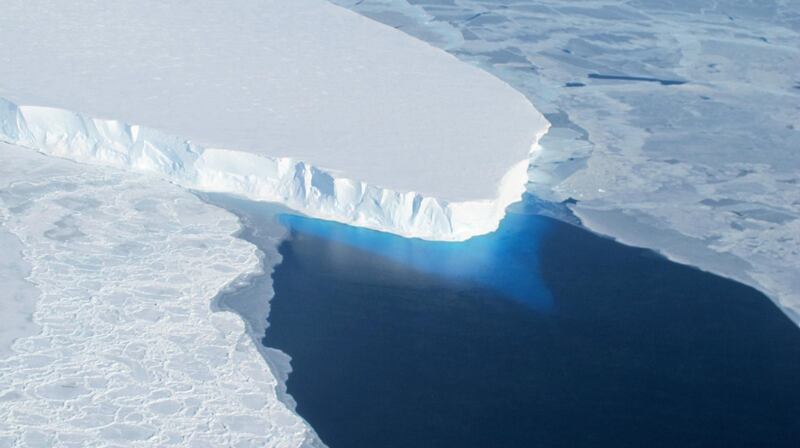As countries map out strategies to mitigate the devastating impact of climate change on coastlines, one question looms: how much will sea levels rise?
Could Hamdan Street be under a metre or three of water by the end of next century? And when sea levels rise, how quickly will it happen?
The answer lies in the interaction between ice sheets and oceans – yet at the moment, the impact on global sea levels is unknown. To understand what happens at the tumultuous boundary between ice and sea, answers can be found in the abstract.
More than 30 of the world’s top climate change mathematicians met this week at New York University Abu Dhabi Institute for a three-day workshop. Their goal was to develop models that explain how ice sheets and oceans interact at the West Antarctic Ice Sheet – this ice sheet drains into glaciers the size of small countries, like the Pine Island Glacier and the Thwaites Glacier, and its future will determine the future shape of our coastlines.
Over the course of three days, with today the last day, the scientists compared ice sheet models and ocean models with the goal of developing detailed models that combine the two.
“The single biggest uncertainty in future estimates of sea levels is to do with how the ice sheet responds to ocean water and the [majority] of climate models don’t consider that influence at all,” said Dr Ben Galton-Fenzi, a senior research scientist with the Australian Antarctic Division.
“Currently they just have some really simple ways of dealing with the influence of climate change on the ice sheet. So we’re trying to understand in greater detail how the ocean drives the melting of the ice, which is a massive problem.”
It is the joining, or coupling, of models that is the key. Current global climate models cannot simulate sea-level change because few models join the two systems. There are just six models of how oceans work, and another six models of how ice sheets work, and only two models that combine the two systems together.
“If you want to simulate or project sea level rise we need a system that is fully coupled to represent the reality, which doesn’t exist right now,” said Dr Diana Francis, an atmospheric scientist at NYUAD’s Centre for Sea Level Change.
It's not just warmer air but the ocean itself that melts ice sheets. Ice sheets are disintegrating from the bottom up as they come into contact with warm ocean currents. Normally, warm water from other parts of the ocean sinks and only comes into contact with ice sheets after it has cooled. But when there is a lot of meltwater, as is currently the case, then warm and cold water do not mix properly and warm water comes into contact with ice sheets before it has cooled. This creates a feedback loop.
That means if we don't know what the glaciers are doing, we don't know what the oceans will do, and vice versa.
______________
Read More:
Abu Dhabi scientists' study of shrinking glaciers is subject of new documentary
Special report: Abu Dhabi's dwindling water reserves charted in worrying Sorbonne research
How NYUAD research hopes to predict crucial changes to India's monsoons
______________
Ice sheet and ocean modelling require different set of physics and pairing the two is no simple task.
“An ice sheet model is something that evolves in a very long time scale, hundreds of years,” said Gustavo Marquez, a physical oceanographer with the US National Centre for Atmospheric Research. “While an ocean model is something that evolves much more quickly. So to have these two things talking to each other, it’s a big challenge and not just computationally."
Winds also must be taken into account. Each system affects the other.
Rising Coastal Seas on a Warm Earth is the third biannual workshop organised by Denise Holland of the Centre for Global Sea Level, led by its principal investigator David Holland.
Despite its evident importance, securing funding for such abstract studies remains a challenge.
“For model inter-comparison projects, people often have to latch it onto other projects in order to get funding for it,” said Ben Hills, a glaciologist and PhD student at Washington University. “To the public, doing some simple idealised tests seems silly but we need them in order to test the models so that we know the physics are working before we can move into real Antarctic simulation.”
It is also far less expensive than research on the ground in the remote polar regions.
More observational data will be gleaned from Dr Holland's upcoming research expedition to the Thwaites Glacier that he will led with Keith Nicholls of the British Antarctic Survey. Theirs was one of eight five-year research projects approval last week by International Thwaites Glacier Collaboration.
Much of the expeditions’s data analysis will take place at labs in Abu Dhabi. While the modelling analysis done from a lab on Saadiyat Island can feel a world removed from the Antarctic, the results will have a very real impact on all of us.






